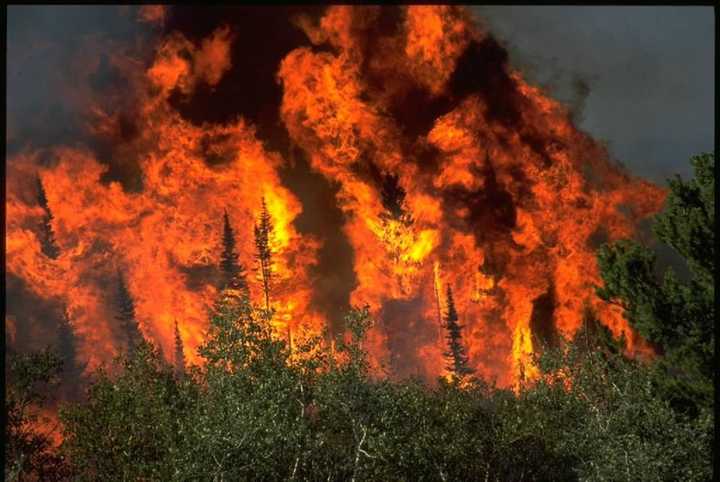Extreme weather, changes in air quality and the spread of new diseases by insects will combine to cost the U.S. economy hundreds of billions of dollars in health, agricultural and infrastructure damage by the end of the century, warns Volume II of the National Climate Assessment, which was released Friday.
"Earth’s climate is now changing faster than at any point in the history of modern civilization, primarily as a result of human activities," the 1,600-page report says.
“U.S. residents are now being forced to cope with dangerously high temperatures, rising seas, deadly wildfires, torrential rainfalls and devastating hurricanes," said report co-author Brenda Ekwurzel of the Union of Concerned Scientists.
The problems “will only get worse and their costs will mount dramatically if carbon emissions continue unabated,” she said.
In the worst case, the nation’s Gross Domestic Product could drop by as much as 10 percent, the report says, noting that climate change has cost the U.S. nearly $400 billion in just the past three years.
Thousands of lives could be saved – not to mention the billions of dollars – if the U.S. started cutting fossil fuel use and greenhouse gas emotions, the report concludes.
Particularly at risk will be children, the elderly and the poor, it says.
The annual average global temperature could rise by at least nine degrees (Fahrenheit) by 2099, the researchers say.
"The global average temperature is much higher and is rising more rapidly than anything modern civilization has experienced, and this warming trend can only be explained by human activities," David Easterling, director of the Technical Support Unit at the NOAA National Centers for Environmental Information.
Among the report’s findings:
- Heat, floods and drought will hit farmers particularly hard: Those in the Midwest, for instance, will see at least a nearly 75% drop in corn production;
- The Midwest will also see 2,000 more annual premature deaths by 2090 as the average temperature rises;
- Asthma and allergy problems will worsen;
- Mosquito- and tickborne diseases like Zika will increase -- West Nile cases are expected to more than double by 2050.
- Health hazards will increase with more wildfires, which already are more destructive than ever;
- Areas where temperatures of up to 100 degrees F are rare – Chicago, for instance -- could have them regularly in summer – while Phoenix could hit between 120 and 150 degrees;
- The Artic will likely lose all sea ice in late summer – creating permafrost thaws that release cardon dioxide and methane into the atmosphere.
First mandated by Congress three decades ago, the report is compiled every four years by top scientists from 13 agencies. It includes contributions from more than 1,000 people – nearly a third of them leasing scientists and nearly half from outside government.
The report’s first volume, released a year ago, found “no convincing alternative explanation" for the changing climate other than "human activities, especially emissions of greenhouse gases."
The latest edition follows a tweet by the president Wednesday night about the coldest Thanksgiving that parts of the U.S. had experienced in more than century: "Brutal and Extended Cold Blast could shatter ALL RECORDS - Whatever happened to Global Warming?"
The researchers, in turn, noted that weather and climate aren’t the same.
“Over shorter timescales and smaller geographic regions, the influence of natural variability can be larger than the influence of human activity," the report says. "Over climate timescales of multiple decades, however, global temperature continues to steadily increase.”
The continental U.S. already is 1.8 degrees Fahrenheit warmer than it was a century ago – with surrounding seas that are 9 inches higher, on average, the researchers noted.
By 2050, they added, temperatures across that span could be 2.3 degrees warmer than that.
The report was due next month, but the administration released it on Black Friday.
Click here to follow Daily Voice Ridgefield Park-Hasbrouck Heights and receive free news updates.


